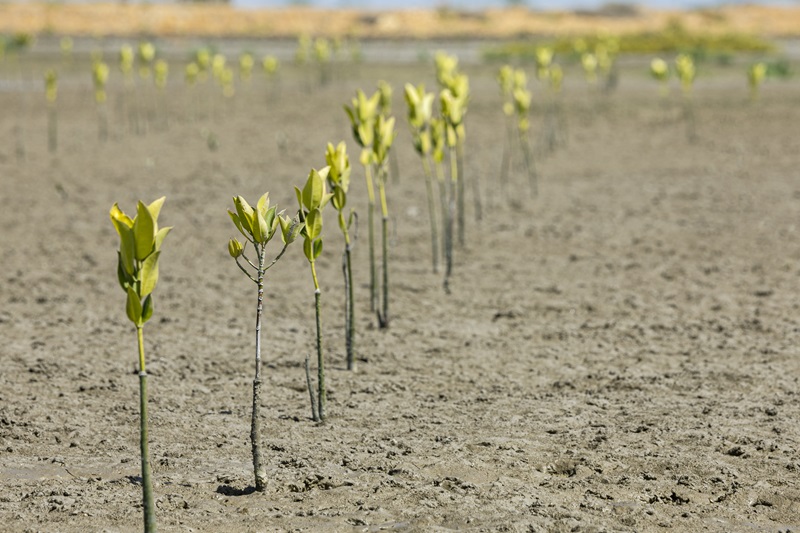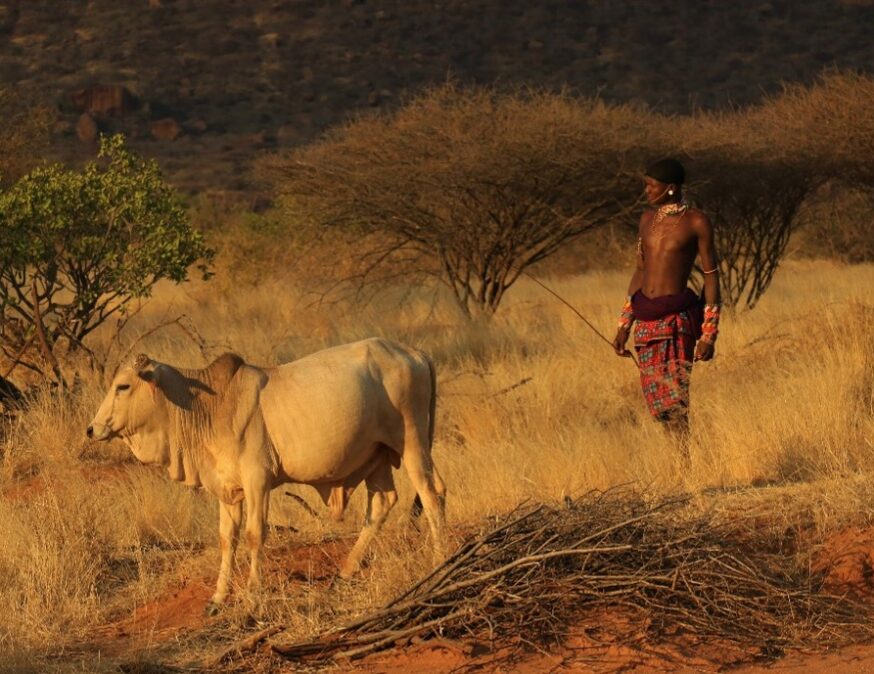For millions of years, marine and coastal ecosystems have been silently removing carbon from our atmosphere. As natural carbon sinks, the world’s mangroves, seagrasses and tidal marshes have shielded us from the full impacts of our own greenhouse gas emissions. Yet, these ecosystems are under threat; human activity is undermining their ability to draw carbon from the atmosphere. If we fail to invest in the conservation and restoration of these species, we could almost be accused of shortsightedness. In the face of climate emergency, we must use every tool at our disposal to mitigate environmental risk. The time is now – we preserve and scale blue carbon climate change solutions if we are to secure a liveable future for all.
The brilliance of blue
Mangroves, seagrasses and tidal marshes are the most established blue carbon climate solutions. To varying degrees, these solutions are already available and able to receive funding through carbon markets.
Mangroves
As natural environmental cleaners, mangrove forests bring an impressive array of climate-positive benefits. They absorb and store CO2; process chemical runoff, including chromium and lead, and even help to break down the toxins in raw sewage dumped into the ocean.
Not only do these forests remove more carbon from the atmosphere than any other type of tree, but also reduce the impact of storm surges by up to 50% in at-risk, developing countries. Given that climate change is predicted to increase the frequency and severity of extreme weather events, investing in effective, natural barriers has never been of more importance.
In this way, people are gradually realising the value of these saltwater trees. Taking into account their ability to counteract anthropogenic carbon emissions, their capacity for disaster risk reduction and their existing worth as richly biodiverse ecosystems, their value is estimated to be in the region of $462 billion to $798 billion per year.
Seagrass
Seagrass has also received an increasing level of attention for its potential as a blue carbon climate solution. As one of only three seawater flowering plants, seagrass is found in shallow, coastal waters. As carbon dissolves in the sea, seagrass absorbs it to use as a building material for new roots and shoots. This process is extremely rapid, taking in carbon 35 times faster than a tropical rainforest. Even when seagrass dies, carbon is (if undisturbed) stored securely in sediment on the ocean floor. Although seagrass carbon capture projects can be expensive, the UK, Sweden and the US are all currently investigating the future potential of this solution.
Tidal marshes
Tidal marshes are among the world’s most effective carbon sinks. These grassy wetland habitats flood during high tide, absorbing seawater and quickly capturing the dissolved carbon it contains. Yet, these ecosystems are in need of our conservation. Pollution and degradation can disrupt the nutrient balance of water and reduce the capacity of tidal marshes to sequester carbon. Looking to the future, the Blue Carbon Initiative has committed to focus on the conservation of tidal marshes as well that of mangroves and seagrasses.
Case study: Delta Blue Carbon, Pakistan
Mangroves are estimated to cover between 12 and 15% of the world’s coastlines. While this may sound substantial, it actually translates to only 0.1% of the planet’s surface. Coastal mangrove cover decreased by over one million hectares between 1990 and 2020 due to illegal logging; raw sewage dumping; chemical run-off and pollution from rapid urban development. You can monitor the state of the world’s mangroves using this tool from Global Mangrove Watch.
It is not all doom and gloom for mangroves. In Pakistan, the tide is turning and forest cover is beginning to increase. As one of the biggest mangrove-restoration programs in the world, our flagship portfolio project, Delta Blue Carbon, has certainly played a part in reforestation efforts. To date, the project has planted nearly 100 million trees. Over a 60-year time period, it expects to sequester 142 million tonnes of CO2 and generate 128.5 million high-quality, nature-based carbon credits. For more information on nature-based carbon credits, please refer to this article.
On paper, mangrove restoration may sound simple. However, it is essential that any trees planted are region-specific if they are to bring genuine, lasting benefits to the local area. Indeed, the success of Delta Blue Carbon is a testament to the project’s commitment to working with local stakeholders. Throughout its lifespan, Delta Blue Carbon will offer full-time employment to many local people, many of whom bring extensive knowledge of the region’s local environment.
What’s next for blue carbon?
Blue carbon climate solutions, like Delta Blue Carbon are certainly gaining traction. Just last year, Respira collaborated with Climate Impact X on a landmark, oversubscribed auction for blue carbon credits. With 250,000 tonnes of carbon removal credits selling for USD $27.80 per tonne, the auction was a promising indication of future demand for high-quality, nature-based solutions.
As such, we should look with interest to prospective blue carbon solutions under investigation. McKinsey writes on the ‘emerging’ and ‘nascent’ blue carbon solutions such as seaweed forest plantations, kelp farming or a move away from sea bottom trawling as this fishing method disurbs stored carbon that could otherwise be secured for millenia. Reef-based blue carbon initiatives are in an even earlier stage of research but there is hope that the carbon sequestered throughout the lifespan of shellfish is of a greater volume than that which is released during the formation of the reefs themselves.
While much remains uncertain regarding the futures of these emerging blue carbon solutions, we know one thing for certain: we must take action now to unlock the full mitigation potential of our coastal and marine ecosystems. To learn more about blue carbon and other nature-based climate solutions, please refer to our flagship portfolio projects on our website: https://www.respira-international.com/portfolio/
Share this article



